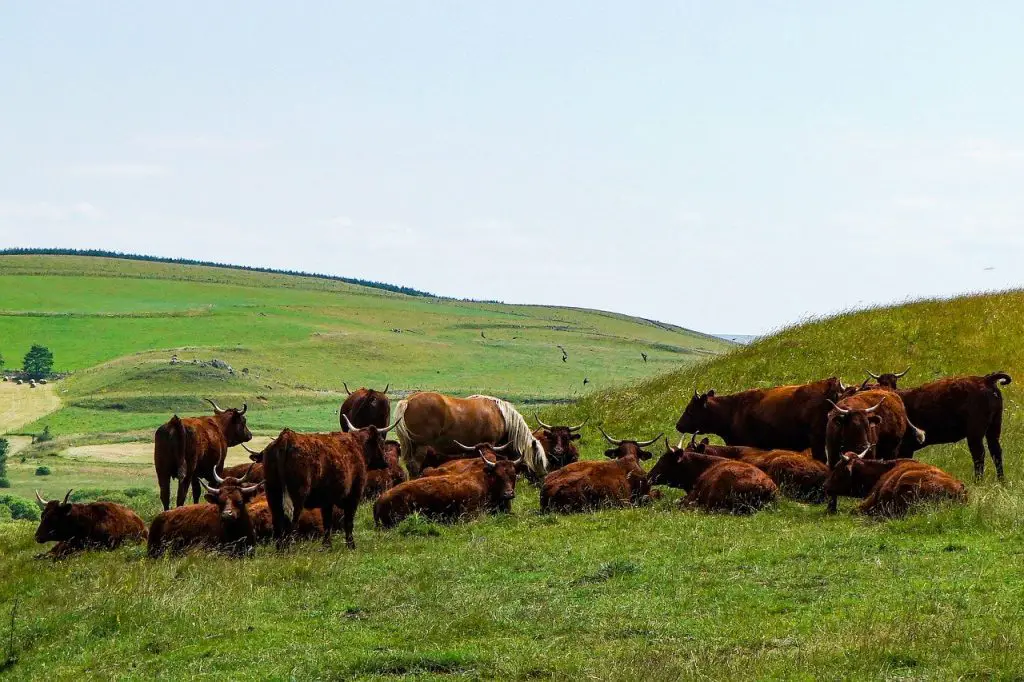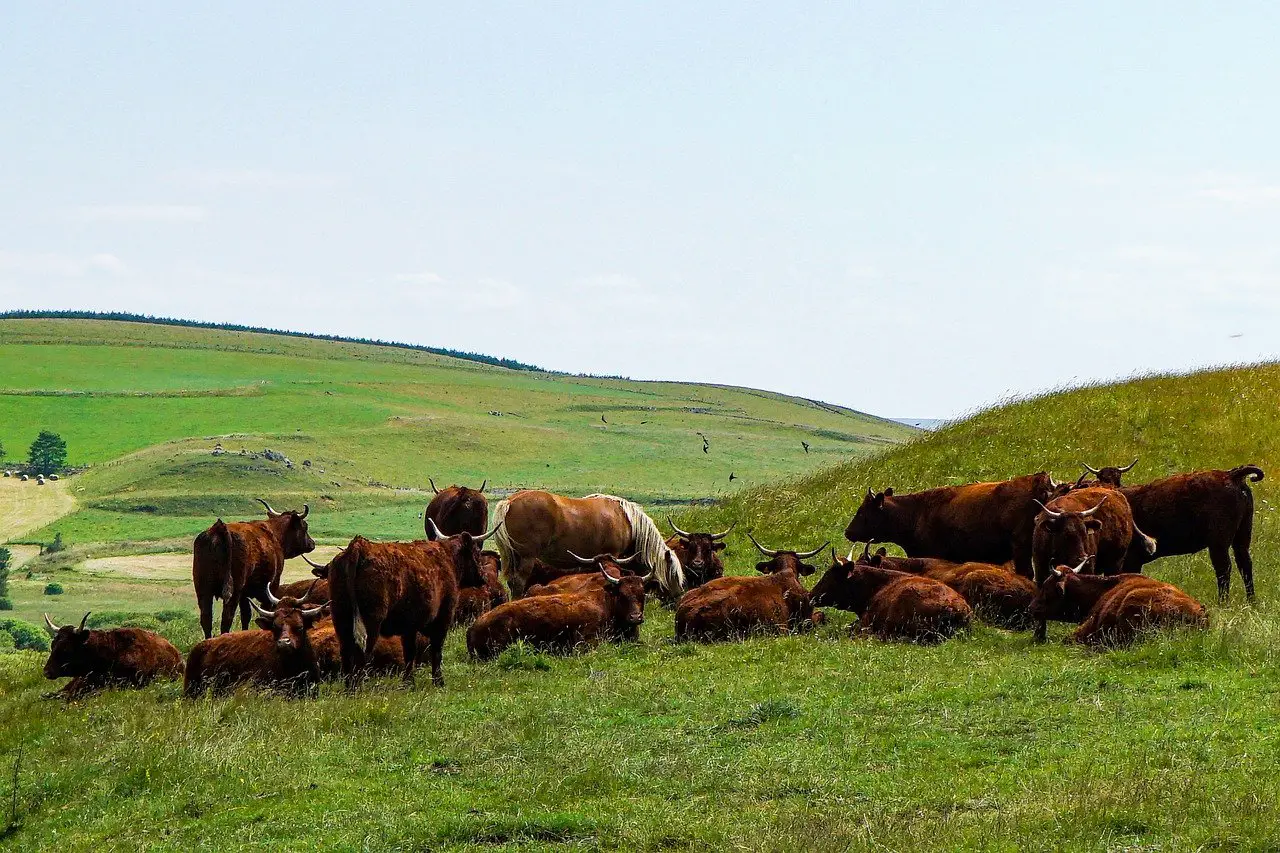Last Updated on March 11, 2022 by Allison Price
- There are some good reasons to keep them together, and some not-so-good ones.
- Cows and horses can make great friends and help to keep your pastures healthy. There are also dangers associated with your horse eating cow-loving insects and your horse eating cow feed.
Horses and cows eat different pasture.
- You can relieve some of your pasture maintenance chores by using horses and other grazers.
- Horses eat all of the grass. The horses’ upper and lower teeth can rip the grass as close to the ground as possible. Cows have only one row of bottom teeth, and their tongues are used to pull out grass at about mid-height.
- Some farms prefer to rotate pastures in a particular order. This helps keep mowing down and maintenance costs low. Horses can eat different pastures. After the horses have been removed, cows are brought in to level it all. The goats then come in to eat all the weeds, and everything else.
- This is a good thing, because horses won’t eat around their manure which allows the grass to reach cow height. You can have your goats come in and take care of the weeds.
- You should consider the type of pasture that you are using. Tall Fescue is a tasty grass. An endophyte is a fungus found inside the plant. This is safe for cows but not for broodmares or stallions.
Is it necessary for your horse to live with cows?
- A lonely horse may enjoy having company. Your horse might be able to have a friend if you have a cow.

- It is difficult to determine how many horses and cows can live together. It is mostly a matter of how much land you have and how many cows and horses live there. I found that there is one cow for every 10 acres. This was the right number, according to a Google search. Another source said that you could have more cows and horses for every three to five acres. Other sources have different opinions on the matter. Talk to your Vet if you are unsure about the needs of your particular animal.
Problems that could arise from horses and cows together.
Bovine papillomavirus (BPV) and Equine sarcoids.
- Bovine papillomavirus, a virus that originated in cows, can cause tumors in horses. These are called sarcoids. This is typically a result of warts, growths and other cancers in the digestive and urinary systems. Bovine papillomavirus is found in many horse sarcoids. Is this virus transmitted to flies? It’s likely.
- Non-malignant sarcoids in horses are a type if tumor. It won’t spread, but can be quite invasive. Sarcoids can cause problems with horse tack and are often found around horses’ faces.
- If irritated or bumped, sarcoids can also be a great bleeder. Many can be removed surgically.
Horses are often taken advantage of by horn flies who love cows.
- Some flies love cows, and will attach to your horse as well. Horses can be extremely annoyed and irritated by the horn fly, which is also known as the “cow fly”.
- Horn flies look tiny and like little triangles. They prefer to hang out on the shoulders or backs of people, but if it is too hot or humid, they can attack their bellies.
- Both male and female hornflies eat blood. They eat around 30 times per day. They can lay eggs in manure, and they can survive winter under a pile of manure in the pasture until the spring. Another reason to remove the manure from your pastures is
Monensin and cow feed are the main reasons horses and cows should be kept apart.
- You don’t need to spend a lot of time studying the digestive systems of horses and cows. The cow takes longer to digest his food and has many “cycles” of digestion, such as regurgitating his cud.
- This means that cows can take less quality hay, grass, or feeds to get maximum nutrition. Horses on the other side are less efficient and require higher-quality hay.
It’s adorable, but not the best pasture mate.
- Cows and horses (like dogs or cats) need different amounts of nutrients because their jobs and bodies are different. Horses need nutrition to compete in sports and milk cows need to produce steak or milk. Their feeds will vary in quality, nutrients, and digestibility.
- It is common to add anti-coccidial medication, such as monensin, to cow feed. Monensin is essential for cows. Horses can get lethal reactions from cows.
- Silage and haylage should not be used if your horse’s pasture is in need of additional hay. Depending on your location, silage may mean something else.
- Let’s call silage and haylage fermented for simplicity’s sake. A cow can handle it, but a horse cannot. Horses can be seriously harmed by botulism or mold due to the moisture content.
- What does this all mean? You will be able to take a bigger hit if you feed your cow and horse hay of higher quality.
There are many fencing options available for cows and horses.
- Horse safety is important. This means that your fencing should not contain barbed wire. To keep your cows and horses safe, you may need to purchase hot wire or another type of fence.
So, here are some things to consider when you mix horses with cows. To reap the benefits of both horses and cows plowing a pasture, rotate who is grazing it to avoid mixing feeds or supplementary hay.



